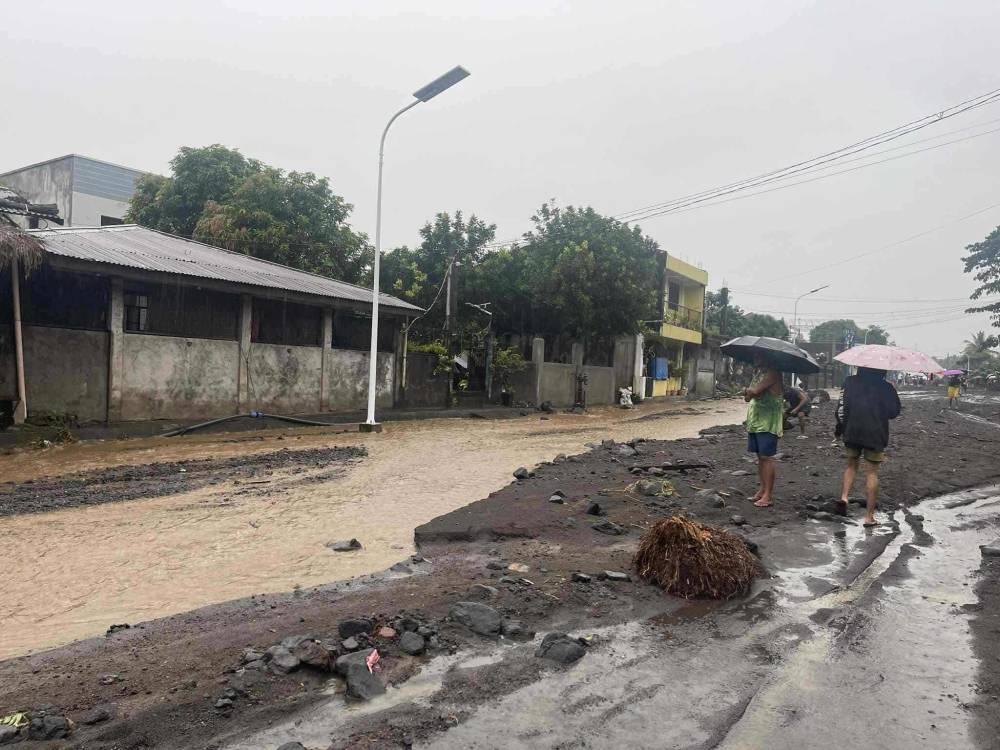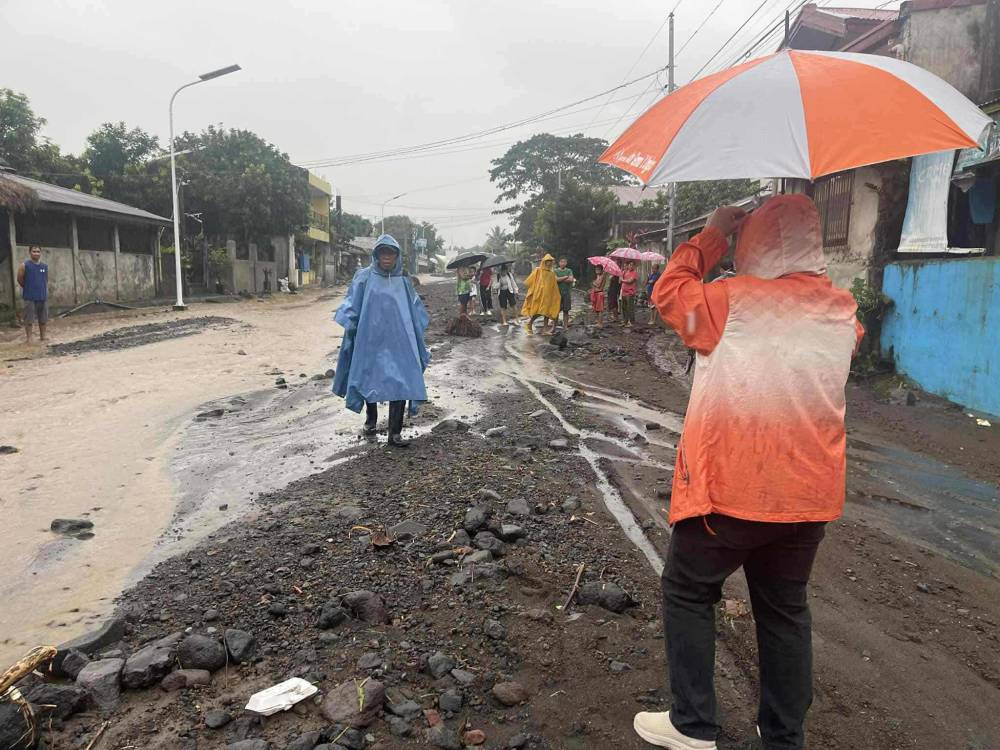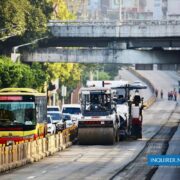Mudflow, flood displaces over 200 in Albay

LEGAZPI CITY—At least 260 people remained in evacuation centers in Guinobatan town, Albay, on Tuesday as flash floods and mud flows cascading down the slopes of Mayon Volcano spawned by incessant rains continued to threaten their community.
“When the rain started pouring, we began preparing our belongings to bring to the evacuation center. It’s traumatizing now, because we know that if the rain continues for 30 minutes or longer, flooding is sure to follow,” said Judith Pabelonia, 32, a resident of Barangay Masarawag, in a phone interview.
Pabelonia recalled that heavy rains around 3 p.m. on Monday, sent raging floodwaters mixed with mud and volcanic debris from Mayon Volcano into their home.
Similar incidents on Aug. 13 and Aug. 22 had stranded at least 1,300 families in the same village.
Councilor July Tingzon, chair of the committee on public safety, said 104 families from Zones 4, 5, 6, and 8 were staying at the Guinobatan Community College, as more rain was expected due to a low-pressure area and the southwest monsoon.
Clearing
He added that the engineering office has placed heavy equipment on standby to conduct immediate clearing operations should lahar flows occur again. Based on initial findings, Tingzon said, the floods were caused by both the volume of rainfall and lahar deposits on the volcano’s slopes.
“There’s a gully on the higher ground nearby, and because all the usual pathways are now silted, the lahar flows carved new paths through Zone 4 and 8,” Tingzon explained.
Pabelonia, who also serves as a village councilor, appealed for more sustainable interventions.
“Before, we only evacuated during strong typhoons. But now, even light rains pose a danger in our area, and we’re forced to leave,” she said.

Albay Third District Rep. Adrian Salceda echoed the need for a comprehensive solution.
“The situation in the Mayon unit is extremely high-risk. Even simple rain causes severe flooding in the barangay,” Salceda said in a statement on Tuesday.
He said he had already directed the Department of Public Works and Highways to provide an “engineering solution” so that funding could be secured during ongoing budget deliberations.
Cedric Daep, former head of the Albay Public Safety and Emergency Management Office and now Salceda’s chief of staff, emphasized the need for a detailed technical study, as its findings will guide recommendations for structural protection and preventive measures.
“There was no lahar flow in the towns of Camalig, Daraga, and Ligao City, despite experiencing a similar amount of rainfall. The new deposits of the last eruption were also concentrated in these areas,” Daep observed.
The Philippine Institute of Volcanology and Seismology recorded eruptions of Mayon Volcano in 2018 and 2023, both of which left lahar deposits that continue to pose hazards for nearby communities.
Flooded strawberry farm
In Benguet, the famed Strawberry Farm in the capital town of La Trinidad was once again inundated by floodwaters after heavy rains poured over the town on Sunday.
At around 5 p.m. that day, a stretch of road in Lower Bayabas, Pico, turned into a river as strong rainfall triggered flash flooding in low-lying areas. Motorists and residents struggled to navigate the waterlogged streets, with some reporting waters reaching 3 to 4 feet high in certain spots.
Residents also noted flooding in portions of Buyagan and Poblacion. These areas are considered flood-prone, with water often taking hours to recede after heavy downpours.
Authorities have yet to release an official damage assessment, but local farmers expressed worry over potential losses in the strawberry farms, which are highly vulnerable to prolonged water logging.
Residents reiterated calls for improved drainage systems, pointing out that the recurring floods not only affect agriculture but also disrupt traffic and pose health risks. —WITH A REPORT FROM ALLAN M. MACATUNO

















